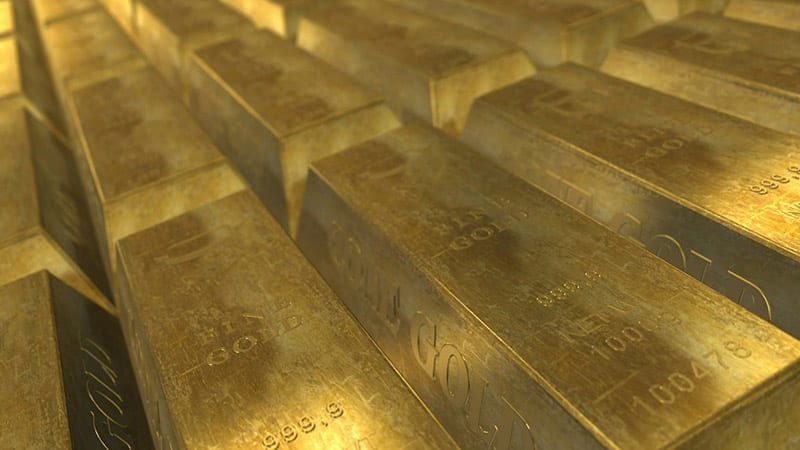[ad_1]
A “healthy” over-the-counter (OTC) market, with institutional investors and family offices turning to gold for portfolio diversification, helped boost global demand to record levels in the second quarter, according to the World Gold Council (WGC).
In its latest update, the WGC explained that gold demand, including OTC investments, rose 4% year-on-year to 1,258 tonnes, the highest second quarter in the data series since 2000.
OTC transactions increased by a significant 53 percent year-on-year to 329 tonnes.
==
==
However, excluding OTC demand, gold demand fell 6% year-on-year, with a sharp decline in jewelery consumption outweighing slight gains in all other sectors.
"OTC investment of 329 tonnes was a significant component of overall gold demand in the second quarter," the WGC said.
"Combined with continued central bank buying, this helped the price hit a series of record highs during the quarter."
Other headwinds in the quarter included continued purchases by central banks, which saw their highest first-half demand on record, and improved ETF flows.
Combined, these factors boosted gold prices to an average of $2,338 per ounce, up 18% year-on-year and 13% quarter-on-quarter.
Notably, the commodity also hit a record high of $2,427 in May.
"The rising and record high price of gold made headlines as strong demand from central banks and the OTC supported prices, which has been a consistent trend throughout the year," said Louise Street, senior market analyst at WGC.
"The OTC market is seeing continued appetite for gold from institutional and high net worth investors, as well as family offices, as they turn to gold for portfolio diversification."
Portfolio diversification was identified as a key allocation consideration by around 70 central banks surveyed by the WGC earlier this year, ranking in the top three considerations alongside gold's long-term value and its performance during a crisis.
In its latest report, the WGC said global gold investment remained resilient, marginally higher year-on-year by 254 tonnes, "masking various trends in demand".
"The 5% year-over-year decline in bullion and coin investment was driven entirely by a 38% drop in demand for gold coins," the report said, while gold bullion investment was 12% higher year-on-year.
Outflows from global gold ETFs eased in Q2, with holdings falling by a lighter seven tonnes compared to 21 tonnes in the previous corresponding period. This also represents a significant slowdown from the 113 tonnes of outflows seen in Q1.
Earnings rose in some markets such as North America and Europe, which weighed on the strong retail investment seen in Asia, the WGC added.
Looking to Australia, Shaokai Fan, head of Asia-Pacific (ex-China) and global head of central banks at the WGC, noted that the strong gold price was proving supportive.
“In Australia, gold ETF holdings fell marginally by 0.2 tonnes in Q2 to 40.3 tonnes. However, total AUM rose 5% in the quarter on the back of a stronger gold price,” Phan said.
Total gold consumption in Australia fell by a quarter (25%), led by a 32% drop in demand for jewelery and a 19% drop in bullion and coin investment year-on-year.
"The increased gold price and high cost of living continue to weigh on jewelry purchases, while the strong local currency and tight financial conditions are likely to have dampened investment demand for gold," Fan said.
The outlook remains promising
The WGC indicated that gold prices continued to stabilize in Q2 and beyond, in line with general demand.
"With plenty of fundamental support, we think prices could maintain or slowly build on current levels in the second half of the year," it said.
Looking ahead, the Street reflected on potential catalysts that could keep gold "front and center in investment strategies."
"With the long-awaited interest rate cut by the US Federal Reserve on the horizon, inflows into gold ETFs increased thanks to renewed interest from Western investors." A sustained revival in investment from this group could change demand dynamics in the second half of 2024,” she said.
"In India, the recently announced reduction in import duties should create positive conditions for gold demand, where high prices have hindered consumer buying."
"While there are potential headwinds ahead for gold, there are also changes taking place in the global market that should support and boost gold demand."
Among the downside risks to gold's performance, as identified by the WGC earlier this month, could be a pullback in central bank purchases and weakness in retail investment in emerging markets.
Upside risks would include a more substantial economic slowdown in developed markets, in tandem with lower interest rates, which would increase interest in gold investment products.
"Furthermore, (geo)political uncertainty could spill over into market volatility, mainly as the race for the White House heats up," the WGC said.
[ad_2]





